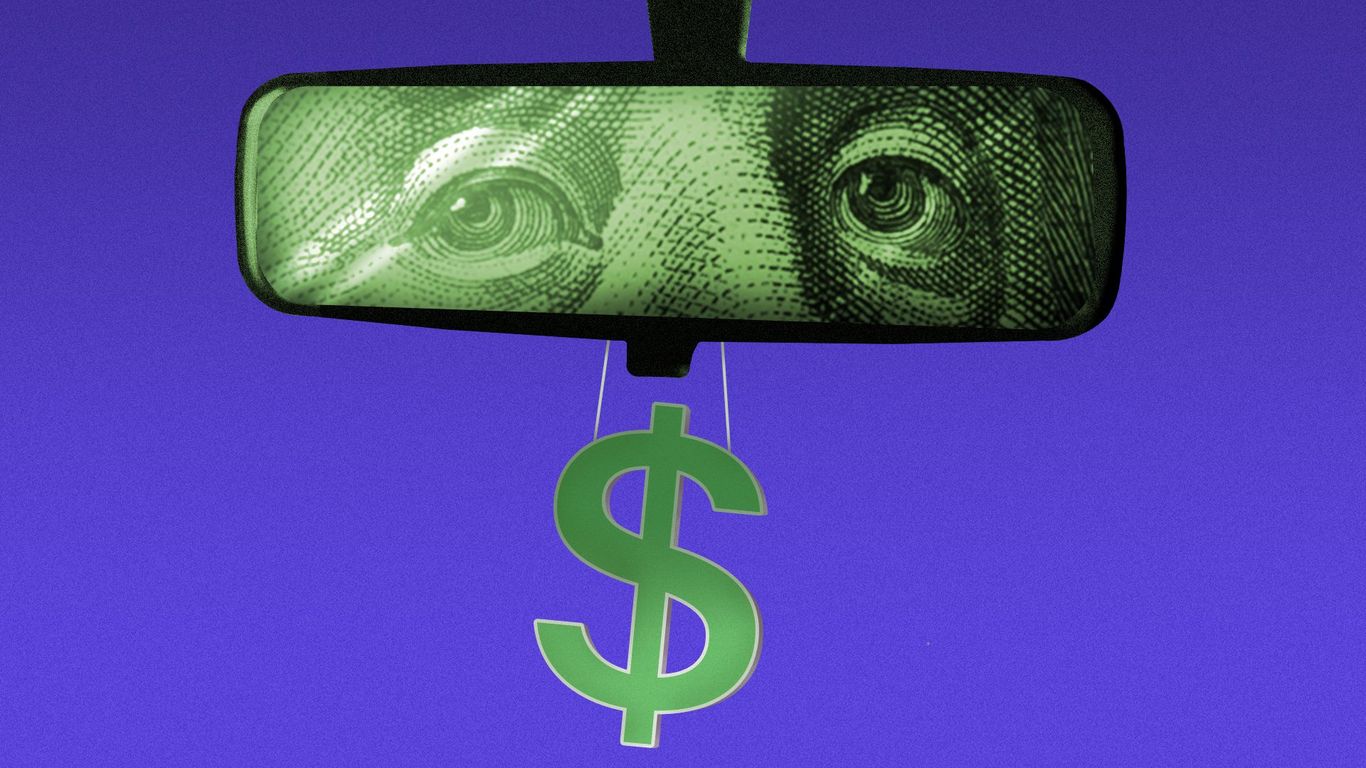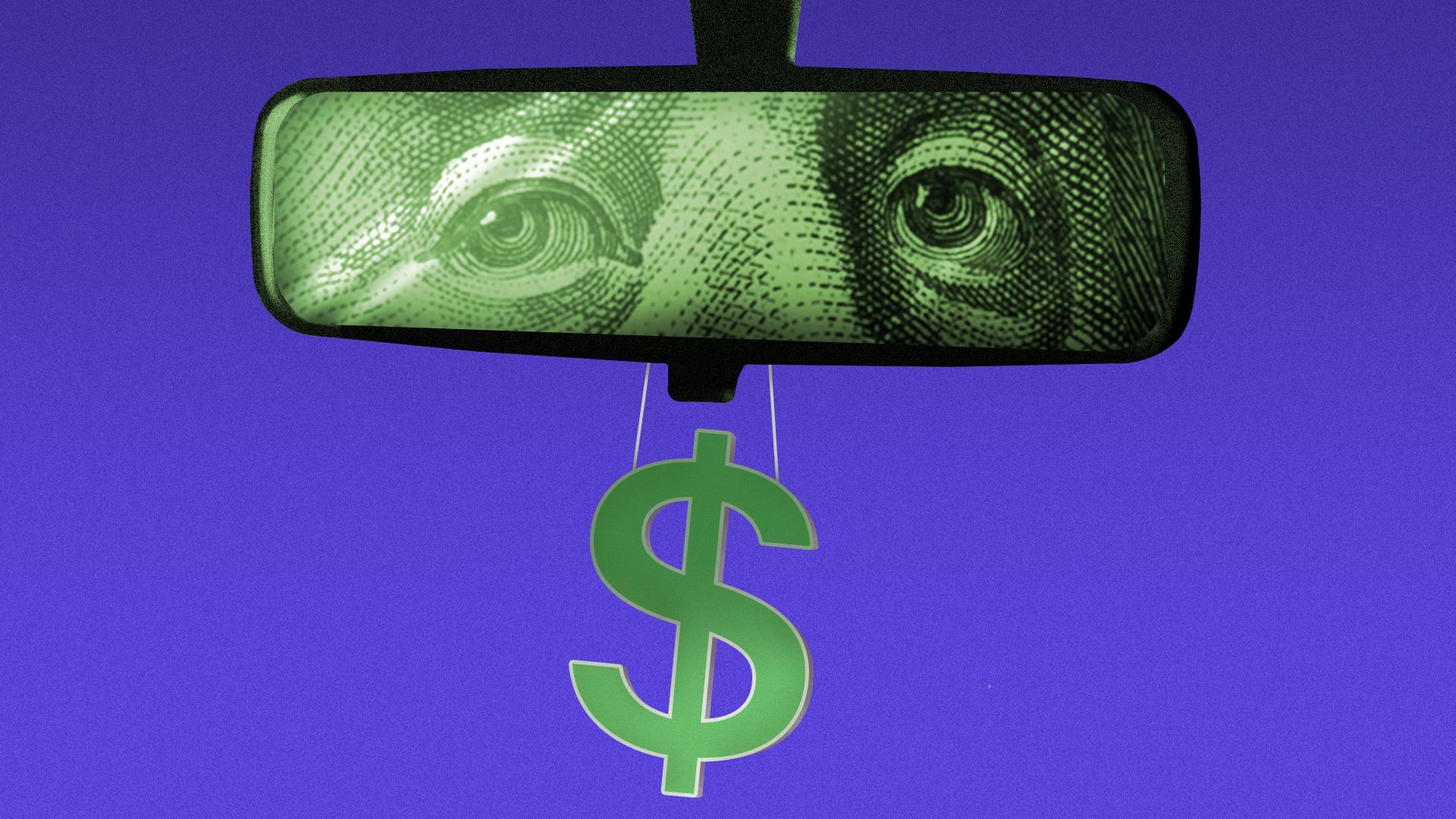

Illustration: Shoshana Gordon/Axios
One of the more devastating flame-outs this year has been the near-total collapse in value of Carvana’s stock — and its pile of debt — as a one-time pandemic darling faces a new market reality.
Why it matters: It may now seem self-evident that a gimmicky “car vending machine” business that never generated positive earnings shouldn’t have taken on billions of dollars in debt. But it’s worth a closer look at the ways in which Carvana was a poster child for several trends caused by Fed policy — even before the pandemic.
By the numbers: Carvana’s stock is down 98% in the last year (not a typo!). Its bonds trade at between 40 and 50 cents on the dollar, according to pricing data from MarketAxess’ BondTicker.
Also: The company recently hired outside advisers to help shepherd a potential bankruptcy process, the Wall Street Journal reported.
What happened: Prior to COVID, a handful of startup types with negative cash flow got access to capital via the high-yield bond market — think Carvana, WeWork, Tesla, Uber and Netflix.
- It’s hard to overstate how unusual that was: Early-stage, pre-profit companies are typically confined to equity markets for fundraising. Bond investors generally only care about stable cash flows (translation: a company’s ability to make interest payments), since they won’t get any upside from massive growth but still face losses if things go south.
- However, a decade of quantitative easing and ultra-low rates pushed high-yield bond investors — those who lend to riskier, lower-rated companies — to stretch to even riskier companies in order to meet their return goals.
- It was a classic “crowding out” effect, Christopher Miller, senior analyst and director of capital markets at Neuberger Berman, tells Axios.
- This bloomed into major FOMO: Investors that abstained saw the bonds performing well for a time, and thought ‘Wow, have I gotten this wrong because I didn’t see cashflow?,’ Miller adds.
And after the Fed’s pandemic-induced market intervention, Carvana was one of those recently IPO’d internet-based companies that caught the zeitgeist of the moment (off-the-charts used car demand + internet commerce boom), and saw its equity soar to shocking heights.
- At its 2021 peak — still sporting negative earnings — Carvana was worth $60 billion.
- The huge equity valuation gave bondholders what amounted to a false sense of security — a reason to keep on lending.
More recently, the lack of imagination on the part of investors about how much rates would rise — and how much markets would fall as a result — helped enable Carvana to keep raising debt.
- “Many people in the world really haven’t seen a rising interest rate environment, and what risks that can pose,” Miller says.
- Carvana struck a deal to borrow $3 billion to back a sizable acquisition just this past February when it was already well-understood that the Fed would be raising rates for some time.
- The bonds issued earlier this year are now worth just half their original face value.
The big picture: Some of those cash-burning borrowers turned out just fine, so far anyway — Netflix and Tesla are now investment-grade. But gone are the days when the bond market will give startups like these the runway to attempt to generate earnings, says Bill Zox, high-yield portfolio manager at Brandywine Global.
The bottom line: In Carvana’s heyday, all that mattered was access to capital. As long as you had that — and nearly everybody did — the train would keep on moving.
- Those days are over now, but the fallout from the over-extension of the last decade is only just beginning.
- “The capital markets collectively are going to identify the winners,” says Zox. “And I’m sure there will be plenty of losers in there, that were able to raise capital just because their story sounded like somebody else’s.”
For the record: Alan Hoffman, Carvana’s head of executive communications, told Axios: “Disrupting any industry is never easy, but especially one that has been around for 100 years. Yet, millions of satisfied customers have responded positively to Carvana’s e-commerce model.”

0 Comments :
Post a Comment